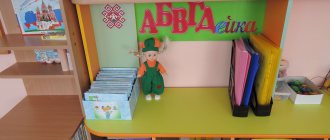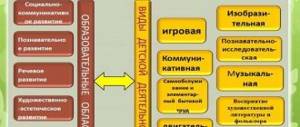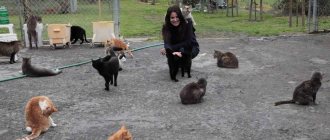Methods of teaching throwing. Sequence of training in different periods
Throwing is a technically complex movement, the implementation of which requires the manifestation of many physical qualities - dexterity, coordination of the actions of the arms, torso and legs, eye, balance, spatial orientation skills, as well as the appropriate reaction of small muscles.
According to the technical characteristics, exercises of this type are divided into throwing itself and those preparing for throwing - rolling, throwing a ball with and without catching, throwing with and without catching balls, balls, sandbags, hoops, as well as natural materials - pine cones, chestnuts, twigs, sticks, snowballs, etc.
Each exercise that prepares for throwing has its own significance for the formation of motor skills. In addition, they all attract children with their dynamism, emotionality, and the ability to endlessly come up with their own variations of movements. There is no more interesting toy than a ball! The ball is associated with the game. It is no coincidence that every action with a ball in everyday life is called a game. This determines the choice of management methods and techniques. Children play ball in any free time, as well as in organized forms of work - in physical education classes, morning exercises, and in various forms of active recreation.
Each exercise contributes to the emergence of specific skills, which are then accumulated in throwing.
Rolling balls and other objects down a hill (passive action), to each other, rolling between objects (in hoops), along a path, along a drawn line, on a board, on a bench, and others are provided for by the program; for all age groups. The complexity of game tasks depends on specific pedagogical tasks, the size of the ball (diameter of a small ball - 3 - 8 cm, medium - 10 - 18 large - from 20 cm and more), distance to a landmark and other quantitative parameters, as well as on methods of action (technique ), body position (sitting on the floor, standing bent over, from a squat, standing on one knee, putting the other leg to the side, standing on two knees).
When learning exercises that involve demonstration, children must be placed so that they see the result of the action. For example, to roll a ball to each other in the younger group, children sit in two lines, facing each other in pairs. You can invite the boys to take the balls and sit at a comfortable distance from each other along the drawn line. The girls will sit opposite. The teacher, demonstrating the exercise, rolls the ball along the resulting corridor.
After the demonstration, which emphasizes three points: how to hold the ball (palms cover the ball lying on the floor from below - from behind, fingers widely spaced), how to aim (look at the goal formed by the partner’s widely spaced legs), how to energetically push the ball (without throwing it up so that he was rolling, not jumping), - the children begin to roll balls to each other. It is advisable to perform the movement once or twice in a general rhythm, obeying the teacher’s instructions: “Get ready, aim, roll...” Then the children roll the balls at will. The teacher walks along the line of those sitting, corrects the actions of individual children or a specific pair, without stopping or interrupting the others.
Skating is organized similarly (from other starting positions) in all age groups. But each time certain fundamental points are emphasized. For example, when skating from a slope or squat, having pushed the ball, the child must straighten up: “...Look whether the ball is rolling smoothly (quickly) ...” The subtext of this “pedagogical trick” is control of breathing: tilt (squat) - exhale, straightening - inhale.
When skating to hit a target (mainly in older groups) - into cubes or a pin against the opposite wall, into a figure at the end of a path or bench, into a ball rolling towards, across a moving target - it is most convenient to stand on one knee, putting the other one to the side leg. It is necessary to prompt and help children: the toe of the supporting leg must be straightened; the leg set to the side should rest on the entire studio - this position will be stable and relieve excess muscle tension.
When throwing the ball in the younger group, “clean” throws are typical - throwing with two hands without catching, throwing and catching after the floor bounces, throwing with two hands with catching, throwing with one hand and catching with two. To ensure the desired result in all exercises, you need to look at the ball.
The most typical exercise for the average is to perform a simple movement between throwing and catching: clap your hands, touch your knees, cross your arms over your chest, open your palms, etc.
Tasks for the older group should actively stimulate the manifestation of various physical qualities - dexterity, accuracy, speed, sense of rhythm, etc. For example, throwing balls and other objects from different positions - sitting cross-legged, kneeling; with performing various additional movements before catching: clap your hands several times (whoever is more), catch the ball in a squat, after a 360° turn, straightening up after squatting, etc. As you master the movements, tossing can be performed with one hand - both right and left .
When throwing a ball on the floor and catching it, the most important and understandable quality criterion for children is the following: the stronger the throw, the higher the ball will jump. Stimulating landmarks are different: above the head, above a stretched rope, above a volleyball net, above a post, up to the ceiling on the veranda, etc. The variation and complexity of the exercises are similar to the previous type of exercise: in the younger groups - “clean” throws, in the middle and senior groups - with an intermediate movement between throwing and catching. In addition, in the middle and, especially, in the senior groups, the techniques of catching the ball with an open palm that require precision are very interesting: when the ball begins to fall down after a rebound, you need to place your palm under it. You can catch either with your right or left hand. Later, you can throw the ball with one hand and catch it with the other, initially with pauses, and then together, turning the palm holding the ball up.
Throwing and catching the ball require differentiated actions: gripping the ball, swing strength, coordination with throwing methods (from below, from the chest, from the shoulder, from the side, from behind). When learning these movements, it is advisable to draw children’s attention to the phases: prepare, aim, throw... In game tasks, movements are performed together.
It is especially important to differentiate movements in younger groups. Having placed the children, the teacher shows the task to one of them. It is known that it is more difficult to catch a ball than to throw it. Therefore, the first action - throwing - is performed by the child. The teacher demonstratively catches the ball as it approaches, having previously stretched his arms forward. You can fulfill the difficult program requirement of “catching the ball without pressing it to your chest” by straightening your arms forward and spreading your fingers wide. “Watch again and listen to how I catch the ball...” In the return throw, you can approach the child, essentially placing the ball in his outstretched palms and saying “oops!”
After two or three shows, the children perform the exercise. It is also useful for children to perform actions simultaneously several times at the teacher’s prompt, and then let them throw and catch the ball at a rhythm that is convenient for them. It is important to warn them not to cross the line they are facing. And this distance from lesson to lesson needs to be gradually increased, which will stimulate more energetic and purposeful actions of the children.
Younger children love to perform targeted throws, while older children are attracted to “deceptive” movements that force the catcher to lunge forward or to the side, run up, jump, crouch, bend over, etc. Therefore, children must gradually master different methods of throwing: from below, with both hands from the chest , one and two hands (depending on the size of the ball) from the shoulder, two, and one hand from above. The effectiveness of these difficult but interesting exercises depends on the teacher’s ability to create an appropriate emotional microclimate.
Dribbling the ball in place and in motion is traditionally mastered with the average group. But experience shows that this work can be started much earlier, especially since balls of different sizes are constantly in the free use of children.
Observing the children, the teacher tells them the most rational course of action. In particular, you need to hit the ball when it flies upward from the floor, meet it with an open palm, and not catch it; You need to put more pressure on the ball rather than slap it, then it will bounce higher.
An adult advises preschoolers to learn to hit the ball with both their right and left hands, standing still and moving forward, turning around, not letting the ball out of the circle, circling objects, etc. In the senior group, you need to teach the kids to dribble the ball not only in front of them, but also nearby, which leads to the basketball technique of dribbling the ball.
All of these exercises, each in its own way, form a “sense of the ball” and have acquired the name “ball schools.” In comparison with throwing itself, they are considered simple because they are performed primarily with the hand under visual control.
Throwing into the distance and throwing at the target. The target can be horizontal or vertical. Various objects are used as targets for throwing - hoops, boxes, baskets, shields with circles drawn on them, large balls, a tree trunk, snow buildings, etc. A horizontal target is placed on a plane, a vertical one at different heights.
Depending on the appearance, size of the target, distance to it, as well as the size, weight and other qualities of the object being thrown, throwing it is selected: with a straight hand from below, away from you, from the side from a low stance, from the side from a high stance, from the chest with both hands, from the shoulder, from above with a straight hand, from behind the back over the shoulder (simplified circular swing).
Each throwing exercise is a forward movement, in which four phases are distinguished: preparatory, aiming, swing, throw.
Throwing at a horizontal target with a straight hand from below is performed as follows:
get ready - take the bag of sand in your fingers, turn your palm up, put the opposite leg forward to the line;
take aim - looking at the target, bring your hand forward, bending slightly and bending the one extended forward; leg;
swing - looking at the target, move the hand with the bag down - back, bending strongly and bending your legs;
throw - straighten up sharply, throw, leaning forward, but maintaining balance.
Throw with a straight hand from the side from a high stance and use it to throw at a vertical target at eye level and below:
get ready - stand sideways to the target, feet shoulder-width apart, right hand with the bag along the body, fingers covering the bag from the side;
take aim - turn your body to the left, straighten your arm towards the target;
swing - turning your body to the right and leaning away, move your hand to the side - back with the bag up, look at the target;
throw - turning sharply to the left and extending to the left - forward with a straight arm, make a throw.
Throwing with a straight arm from the side from a low stance is performed in principle the same way, but in the aiming phase the thrower leans strongly, almost touching his left (if throwing with his right hand) thigh with his chest. This method is used for throwing at a horizontal target, for throwing pebbles across the water so that they jump on its surface, etc.
Throwing away from oneself is used in game exercises such as “ring throw”, in the game “classes”:
get ready - clasping the bag with your fingers, bend your arm in front of you at waist level, put your leg of the same name forward;
take aim - stretch your arm forward, bend over, bending your front leg, look at the target;
swing - leaning back slightly, bring the bent arm to a position at waist level, look at the target;
throw - straighten up sharply, opening your hand in a throw, maintaining balance.
Throwing from the shoulder to a vertical target at eye level and above:
get ready - bend your arm to your shoulder, holding the bag in the fingers of your palm turned forward, put the opposite leg forward;
take aim - extending your hand in the direction of the target, lean forward, look at the target;
swing - leaning back slightly, bring the bent arm to a position at waist level, look at the target;
throw - lean forward sharply, straightening your arm while throwing and maintaining your balance.
Throwing with two hands from the chest involves the manipulation of a large ball and differs in technical nuances in each phase depending on the placement of the target - in front (standing opposite) or above (into the ring or through the rope):
get ready - holding the ball from the side - from behind at chest level, point your elbows down, put one foot forward (or shoulder-width apart when throwing forward and up);
take aim - lean forward, slightly straightening your arms (or look at the target without changing the position of your arms), look at the target;
swing - bend your arms, lean back and squat slightly (or squat significantly), look at the target;
throw - lean forward sharply, straightening your legs into your arms in a throw (or sharply straightening your legs, stretching upward), maintaining balance.
In distance throwing, children must be taught to throw as far as possible and as straight as possible. Therefore, a specific reference point is necessary. The flight range depends on the strength and amplitude of the swing. Movements should be free, energetic, sweeping, ensuring a high flight path. The most accessible method is with a straight hand from above:
get ready - raise your straight arm with the bag up, putting the opposite leg forward, looking forward;
take aim - lean forward with your whole body, transferring the weight of your body to the front leg;
swing - lean back, turning to the right and straightening or even lifting your left leg;
throw - straighten the right leg with a push, leaning forward and transferring the weight of the body to the left leg, arm) carry it near the head and send the bag forward and upward with a sharp jerk of the hand, swap legs with a jump, which ensures balance.
As you master this method of action, you can complicate the details. For example, in the preparatory phase the hand with the bag is lowered down, in aiming it is brought forward, in the swing - up - back. The movement as a whole turns out to be more energetic, which affects the flight range, which attracts boys in particular.
The greatest flight range is provided by the method from behind the back, over the shoulder (a simplified circular swing used in physical education for adults in throwing a grenade). Mastering it presents some difficulties. Therefore, in leading exercises, it is necessary to use landmarks located above the child’s outstretched arm. The best conditions for such exercises are the natural environment:
get ready - stand sideways (left when throwing with your right hand) or half-turn in the direction of throwing, feet shoulder-width apart, arms down;
take aim - extend your arm with the bag in the direction of throwing, turn your torso;
swing - move your straight arm down - back - up with a simultaneous rotation of the torso and natural bending of the legs;
throw - straighten your torso and legs up - forward, moving your arm almost straight up - forward, sharply throw the bag with your hand.
In order to achieve harmonious development, children should be taught to throw with both their right and left hands.
The above throwing methods are described somewhat simplified, in particular, actions with the left hand. Regular movements based on the principle of cross coordination determine the corresponding actions of the left arm and left leg. Trying to explain them to children complicates the instructions.





